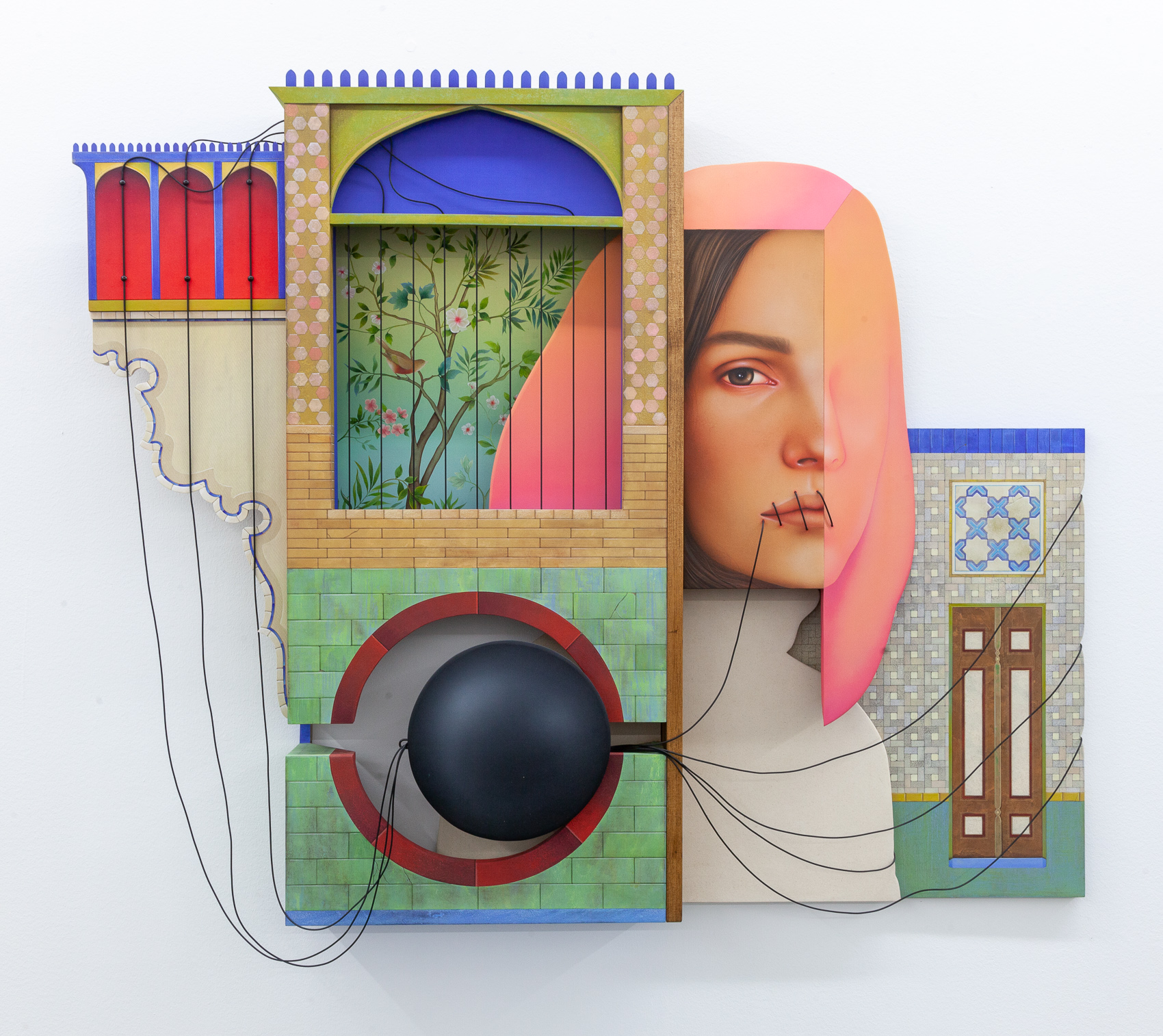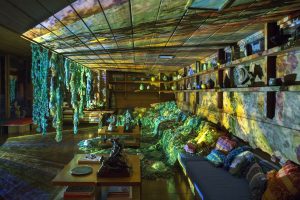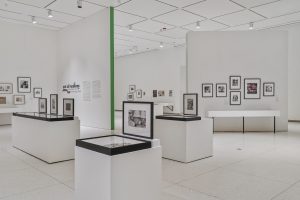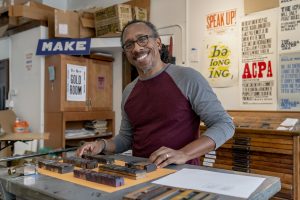Archival photographs of sculptures, paintings, and other media often do a poor job of translating the dimensionality and texture of said works. Arghavan Khosravi’s pieces are a testament to just how much they miss. Photos are unable to carry the dimensionality and presence of Khosravi’s work to a digital format. At The Witness, Khosravi’s debut show at Kavi Gupta Gallery (April 6 – May 21, 2022), her paintings burst from the traditional four-sided terrain to create a Jenga-like mashup of architecture, figures, and mesmerizing patterns.
Khosravi’s own biography reveals the reasoning behind her choices of colors and themes. A Tehran-raised, Stamford, CT-based painter, Khosravi was raised by parents who fully supported her artistic endeavors. Choosing a career path that seemed the most logical, she studied Illustration and Graphic Design in Tehran before making the leap to the United States to pursue an MFA in painting from the Rhode Island School of Design. It wasn’t until COVID hit that she started working on a larger scale and adding more dimension to her pieces than ever before. That period of solitude led to her gallery show In Between Places in 2021 at Rachel Uffner Gallery and inspired her body of work shown at Kavi Gupta Gallery.
Stepping into the gallery I am greeted by the standard four white walls tastefully adorned by five of the six works in the show, with the last tucked away in an unmarked room beside the front desk. There is no single linear progression to follow besides where my eyes and excitement lead me. Each piece is bluntly titled with a harsh “The” at the beginning giving an air of importance and finality to each piece. Her interpretation of the words and phrases found in her titles like Witness, White Flag, and Burden of Thoughts, display her trying to grasp these larger-than-life concepts within a singular work.
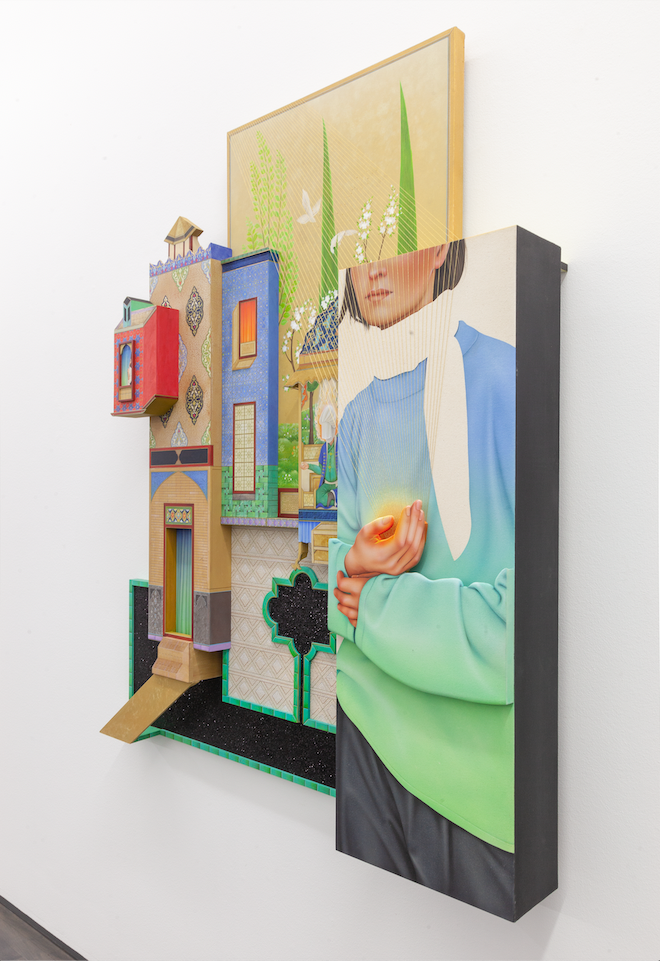
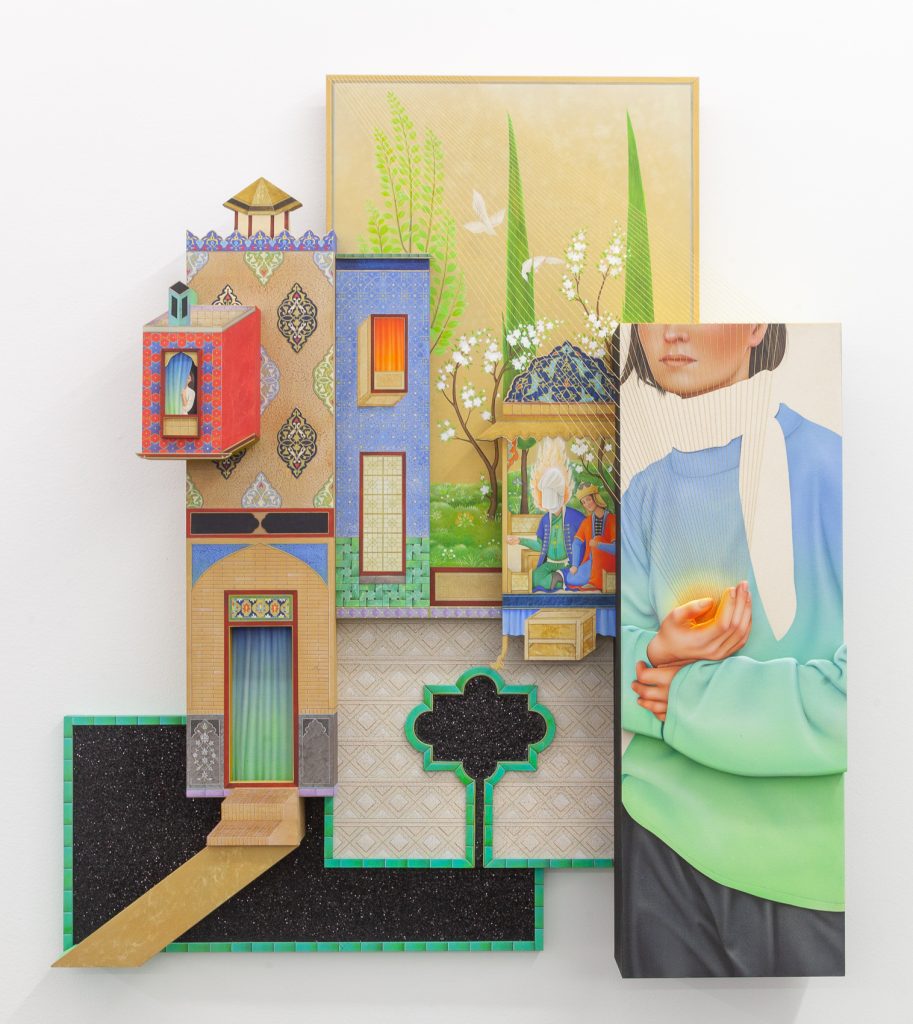
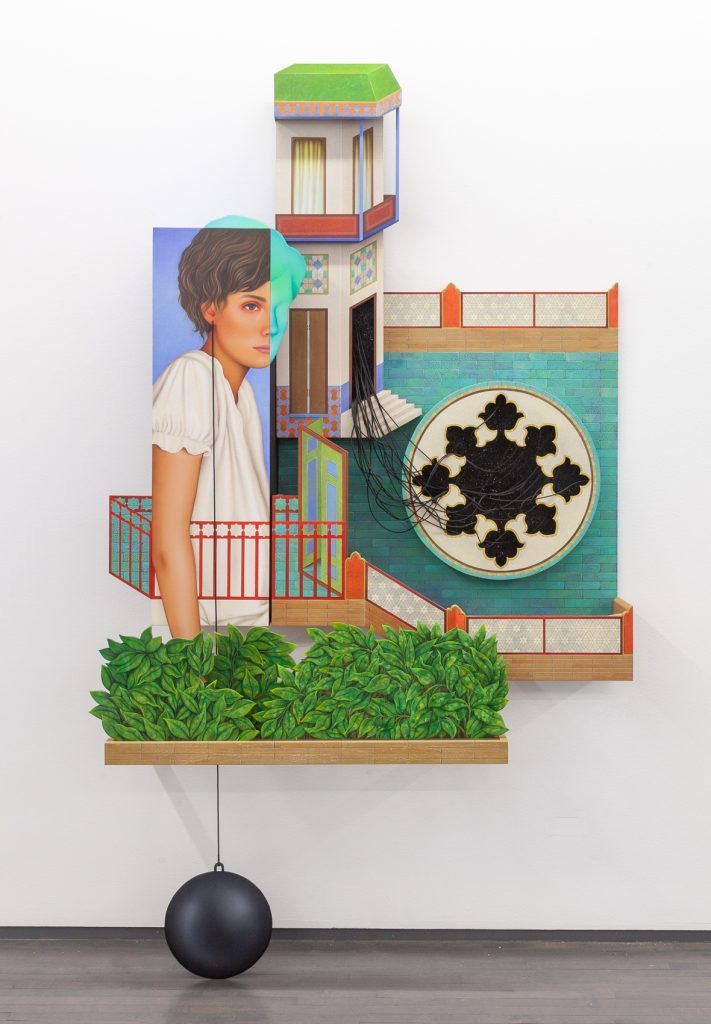
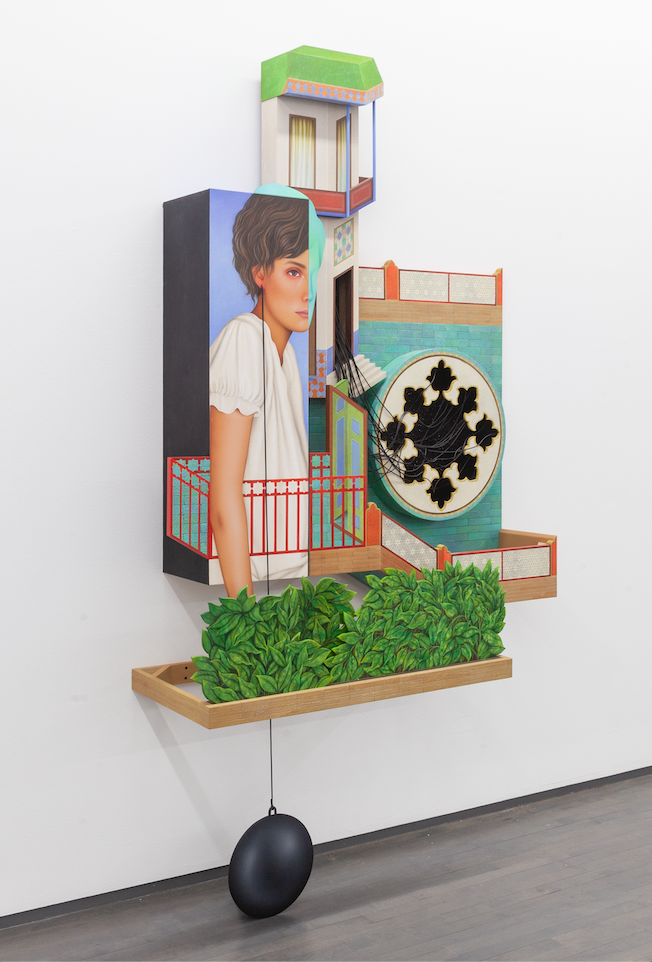
Moving in a counterclockwise fashion through the gallery, I first encountered The Red Fence and started to pick up on motifs of contemporary womanhood, Iranian architecture, and details she places in the rest of her works. In each layer of The Red Fence, different dimensions and materials are uncovered. From the rope precariously dangling a ball and chain from the ear of the half-featured woman, and the realistic to unnatural colored acrylic on wood, to the farthest back layer of dense black glitter slightly shimmering like luminescent charcoal dust. Each layer obscures another — hiding a flexed hand or concealing the woman’s face in a painted, radiating blue-green ombré. By looking from the side, we uncover the actual supports and structure of the piece usually hidden from the public’s view.
Each architectural element is painstakingly created by herself in her studio. The meticulous details of tiles and patterns almost seem too good to be true until closer examination reveals tiny cracks drawn on each wall and floor, breaking down any notion of perfection or impenetrability of the stone and tile buildings. These tiny fractures echo across the room as I start to notice them pop up again and again in different pieces. The frames of Khosravi’s paintings build themselves up in front of my eyes. A mishmash of rectangles layered over one another slowly reaching toward the viewer.
Revealing the construction of the pieces, with the screws and wooden joints, highlights Khosravi’s own architectural feats in creating these structures. Numerous acrylic painted canvases tightly mounted on small and large pieces of shaped wood panels tricked me into believing she painted directly onto wooden surfaces. While we get a small glimpse into their design, how they are mounted to one another whether with glue or more likely screws and nails, is still hidden between panels and walls. Her studio at home is too small to contain one of her paintings fully realized, let alone the six on view. She is forced to work fractionally creating each section on its own only to finish putting the pieces together in the gallery space.
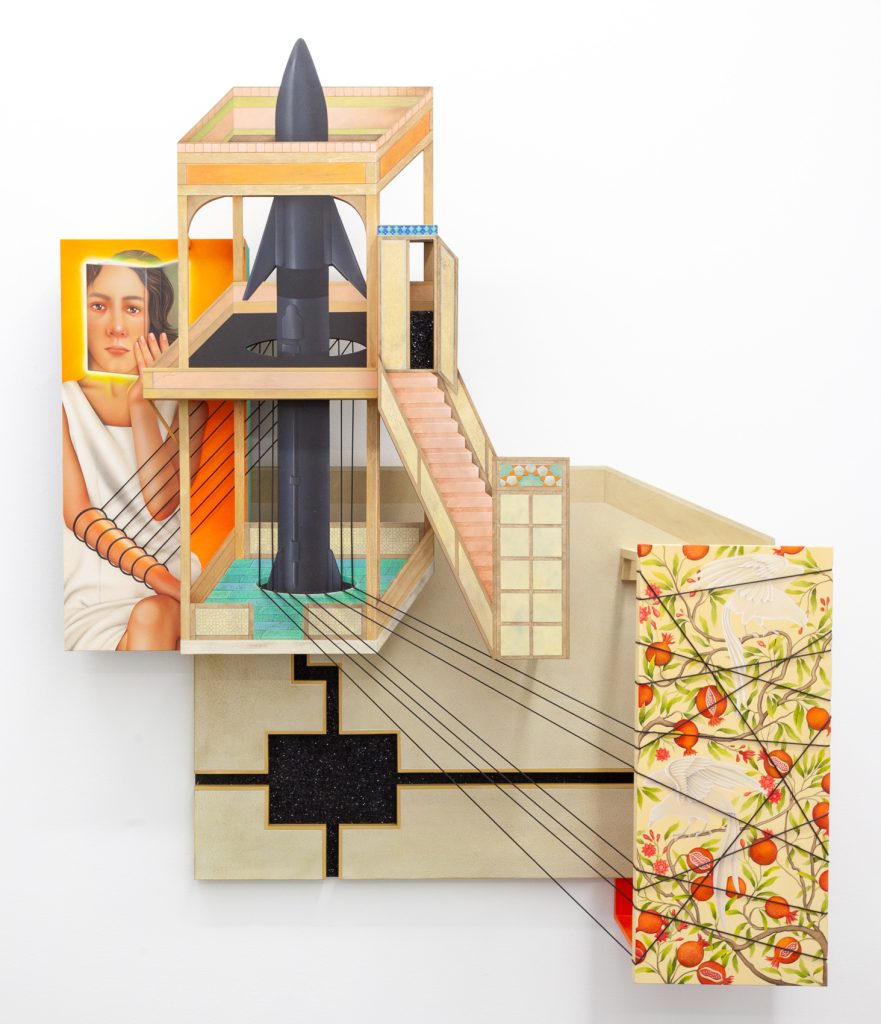
All of the layers puzzle together to make each work feel like a collage of fragments from the same film, creating new associations across timelines and plots. We see the women, the backgrounds, the props and know they connect to one another, sometimes literally with rope, but we yearn for the figures to explain what is unfolding. Khosravi takes the role of a movie director who has forgotten to zoom into the scene, revealing the lights, microphones, and electric wires powering the production at hand. Looking upon her works forces us to feel the emotion and power of the women’s weapons while also confronting that it is a fictitious fantasy carefully constructed from wood and paint.
Khosravi’s visual signifiers of power, such as the weighted ball and chain in The Red Fence and the large missile in The Pomegranate Garden, haunt almost every piece on view. The Pomegranate Garden, situated alone in the second gallery room, almost centers the harbinger of destruction, alluding to its continuous presence in her mind. This weapon, literally tied to a woman’s arm and around perched birds, represents the existential fear of war that Khosravi has described feeling for her family as an Iranian abroad. Throughout her oeuvre, they sit heavy in the scenes, sometimes hanging low, scraping the ground and other times tied to the figures like a ticking time bomb. The dark voids signify the oppressive tools of control and obedience used against women and dissenters.
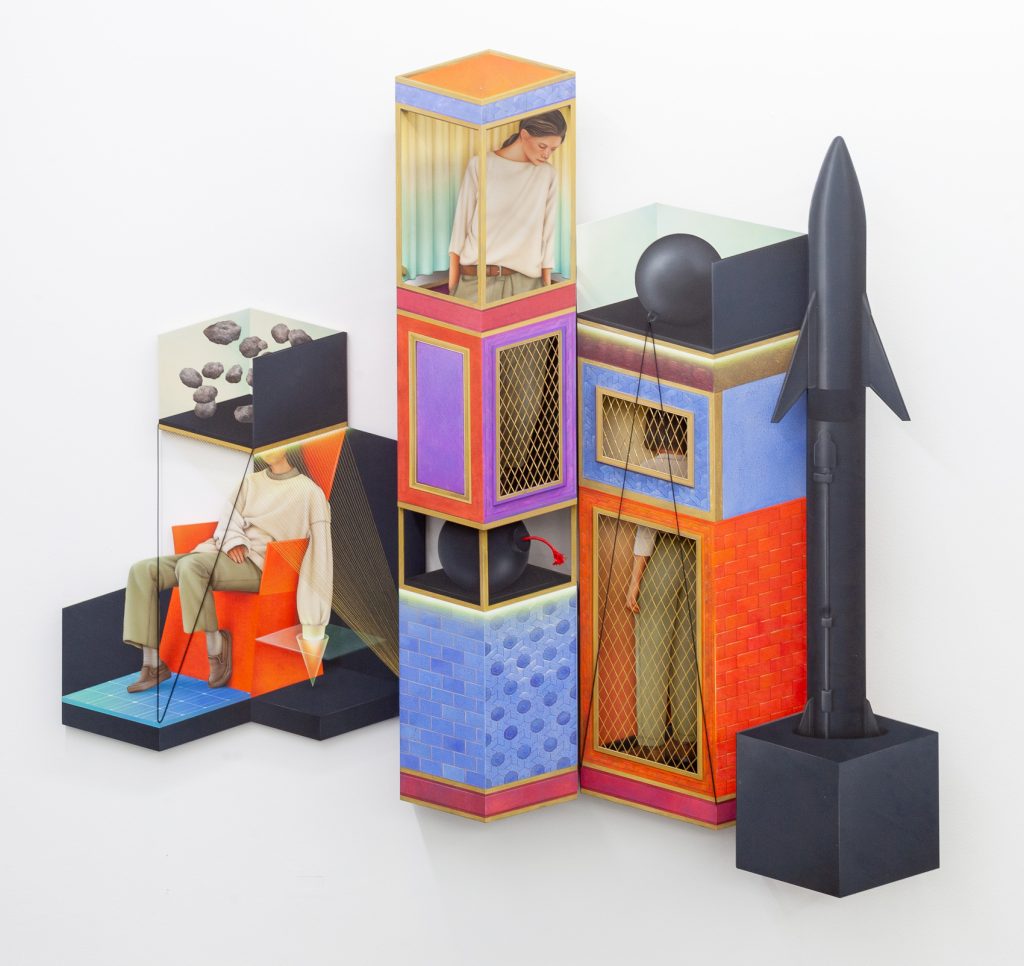
Amongst these moments of fear, there seems to be a longing for connection and perhaps a look toward a brighter future. The Burden of Thoughts, displayed in the main space but which could have benefitted from being placed solo in the other gallery room, ties all these disparate tangents of war, feminism, hope, and oppression together as Khosravi takes her painting to a new, metaphysical dimension. The three women we can see appear to represent three generations of women: a daughter, mother, and grandmother, all enclosed to various degrees. At the bottom left-hand corner is the youngest woman in a sweatshirt and Vans slouching in a chair with an uncharted grid below her feet and floating rocks above her head, seemingly existing in her own plane of time and space. Is she this family’s hope at bringing them into a new and unseen world? One so unimaginable that it has yet to be described and envisioned? The rays of golden string obscuring her are reminiscent of the halos and godly light of Renaissance paintings and Persian miniatures, in which reflective material represented the holy and unknowable heaven awaiting those looking towards a hopeful tomorrow.
Each fractured canvas resembles how it feels to live in the contemporary world as our own personal lives consist of disparate moments before COVID, after Trump, and waiting for something good, better to come. It can feel helpless to think positively as I relate to the women tied up to unknowable forces, but if I can see strength and a glimmer of hope in Khosravi’s work, I have to believe there is a brighter future to come.
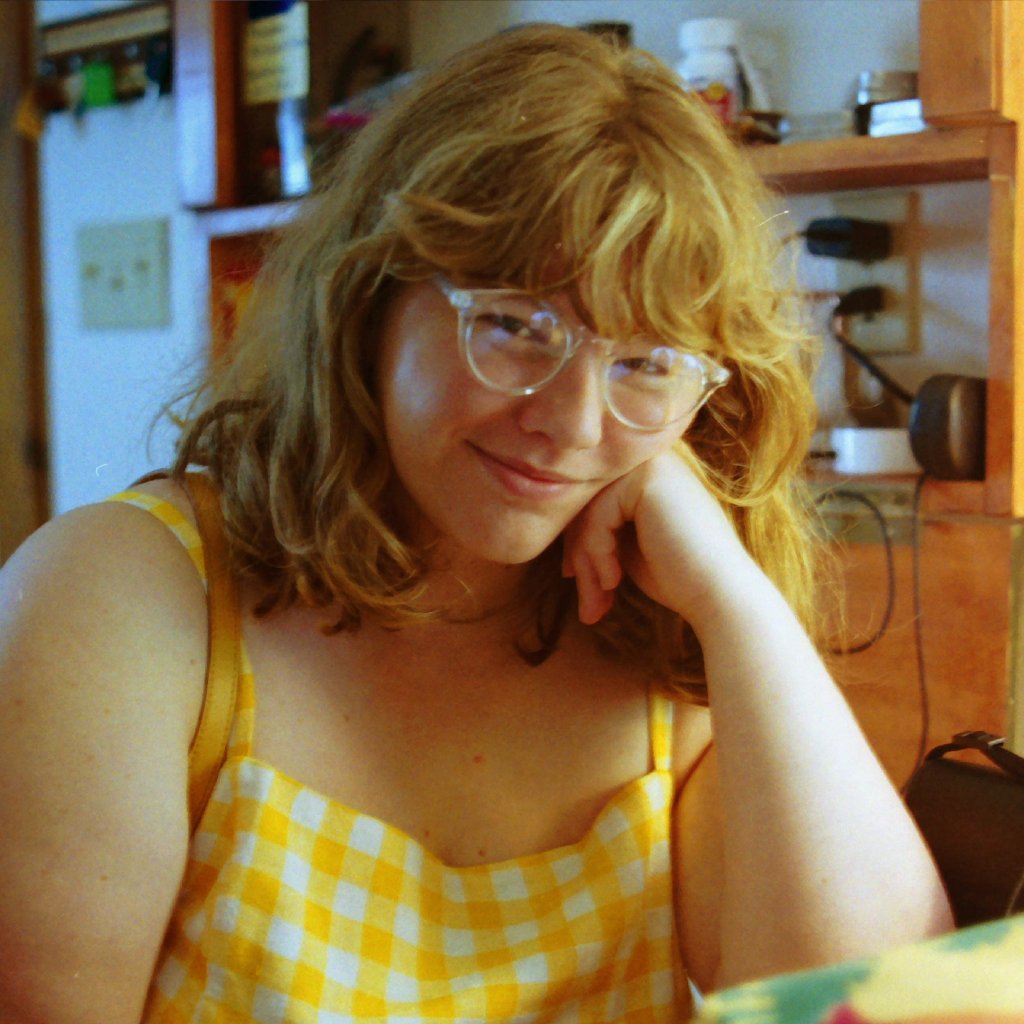
About the Author: Elizabeth Upenieks is a Chicago-based curator, writer, and art historian. She earned a BA in Art History from the University of Texas and an MA in the History of Art & Architecture from the University of Massachusetts, Amherst. Her most recent projects include What We Do in the Shadows and PLATFORM 26: Myoung Ho Lee, Tree…#2 at deCordova Sculpture Park and Museum, Lincoln, MA.
